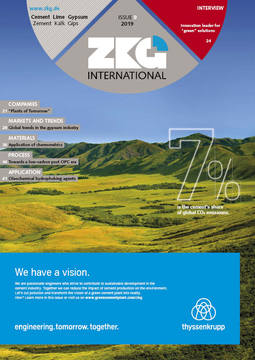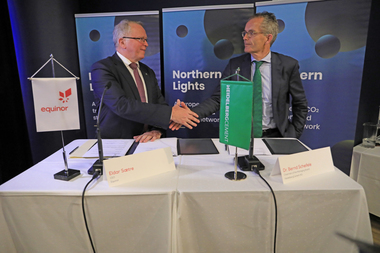A green cement industry
For years now, the cement industry and its suppliers have been working to make this vision reality. The topic runs like a thread through this industry journal, too.
The big cement players have been advertising positively with their goals for CO2 reduction and the results they have achieved so far. Since 1990, LafargeHolcim has reduced its net carbon emissions per tonne of cement by 25 percent. By 2030, HeidelbergCement plans to reduce its specific net CO2 emissions by 30 % compared to 1990, and had already achieved a reduction of 20 % by 2018. HeidelbergCement would like to realize the vision of a CO2-neutral concrete by 2050. Votorantim Cementos’s goal is to reduce its CO2 emissions per tonne cement by 25 % compared to the year 1990, Cemex plans 29 % by 2030 and had already achieved 21.6 % by 2018. The issue is not only occupying the global players but also regionally operating producers. I think all cement manufacturers worldwide will have to meet this challenge sooner or later.
Not only the cement producers, but their supplier industry, too, is taking its responsibility seriously here. In this issue, Pablo Hofelich, CEO of the business unit Cement Technologies at thyssenkrupp Industrial Solutions, explains to us in the interview from page 24 the goals of the globally operating plant and machine engineering company for the cement industry. Hofelich sees it as a particular obligation to develop processes and technologies that enable sustainable cement production. The vision of thyssenkrupp is the “green cement sack”, i.e. cement that has been produced with zero emissions. There are already possibilities for production not only with lower (CO2-) emissions, clinker additives for a reduction of the clinker content and the SCR catalyst for cleaning gas in cement plants to reduce nitrogen oxide emissions. Other possibilities for CO2 reduction are already being trialled, like the use of calcined clays and the utilization of 100 % alternative fuels. As a final step, Hofelich sees “the use of technologies to capture and store CO2”. Here thyssenkrupp has set itself ambitious goals and wants to be climate-neutral from 2050. Read more on this from page 20.
The researchers at Karlsruhe Institute of Technology are of the opinion that an important key strategy of decarbonation in the cement sector must go beyond CCS. In their paper (from page 46) they demand that investment be made in longer-term solutions that don’t stand at the end of the chain, but there where the emissions are produced. They are pressing, for example, for the development of top-grade low-carbon cement products.
In autumn, some of the big international cement conferences and also the ILA (International Lime Association) General Assembly and Information Exchange Forum are taking place. We are excited to find out what new things will result in the “green cement and lime industry” and shall, of course, report on this.
Yours
Anett Fischer
Editor-in-Chief



